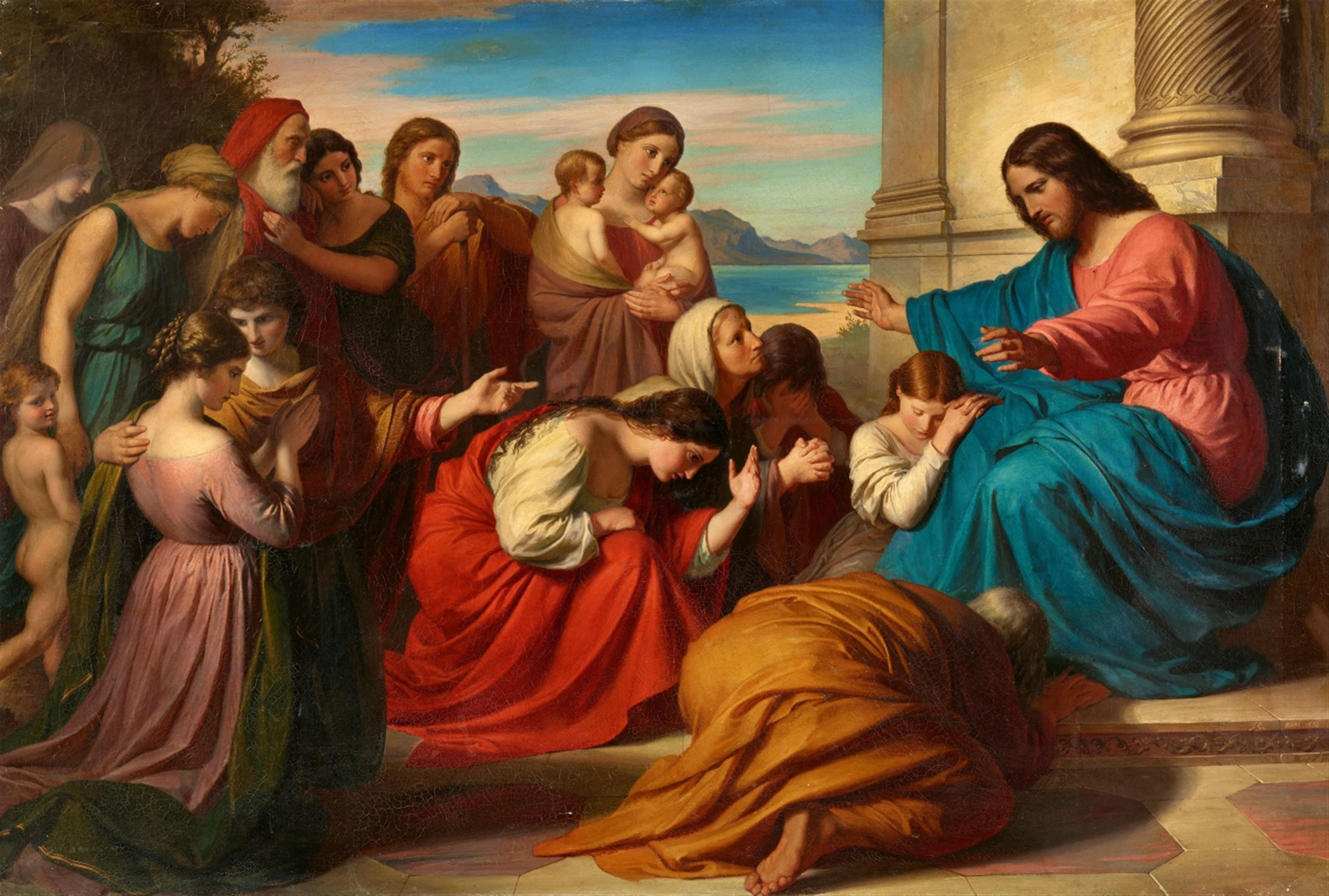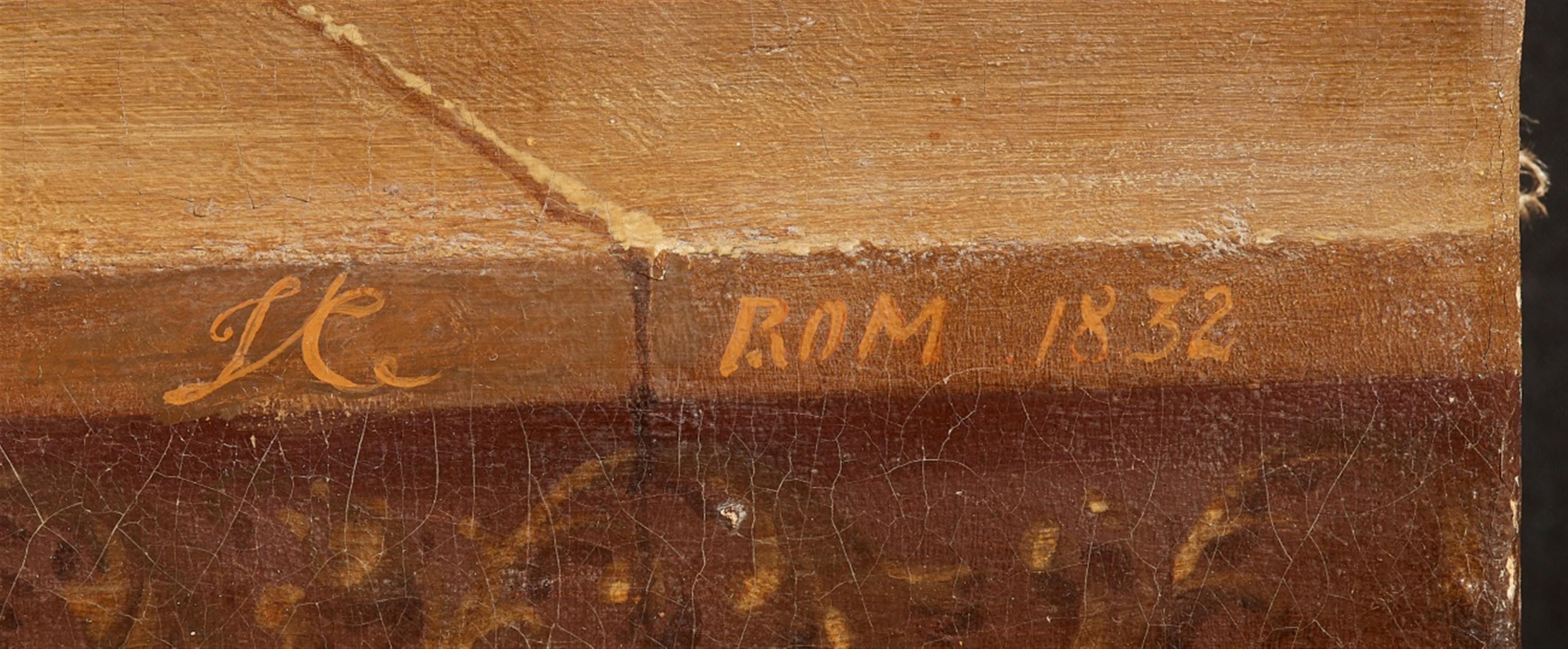Julius Hübner, attributed to
Let the Little Children Come to Me
108.5 x 128 cm.
Monogrammed and dated lower right: JH (conjoined) Rome 1832.
Unfortunately, researchers have not yet been able to securely identify the author of this monumental composition painted in 1832. The work is signed with the conjoined monogram “JH” in the lower right and inscribed “Rom 1832”. No German or Austrian artist of the early 19th century had these initials except Julius Hübner. However, as the art historian Birgid Schmittmann has pointed out, Hübner's monogram differs from that used in the present work, and the artist left Rome in 1831.
Julius Hübner painted his work “Ruth und Naemi” for the Prussian crown prince Friedrich Wilhelm in Rome between 1829 and 1831. The work, which now hangs in the Alte Nationalgalerie in Berlin, is comparable to the present composition in many respects. Both paintings feature female figures inspired by Raphael, as well as similarities in the design and use of drapery and fabrics in a colour palette dominated by ochre, pink, and olive green. Both feature a depiction of a southern bay in the background, partially obscured by the figures. Another interesting similarity is the fact that the hairstyle of the kneeling female figure in the left of this painting is identical to that used in the figure of Arpa, the third figure on the left in the Berlin painting.
The attribution of this work to Julius Hübner, a pupil of Wilhelm Schadow, cannot be confirmed with absolute certainty, but as shown by comparison with the securely attributed work in Berlin, it also cannot be ruled out entirely.
Provenance
Italian private collection.




